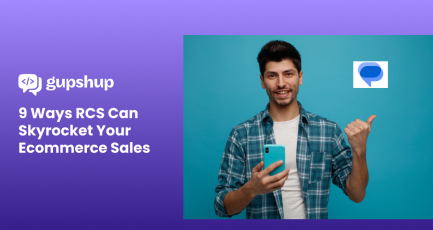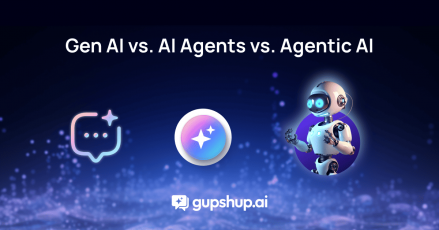How chatbots help with your marketing efforts

Marketing in the 2000s was dominated by search engine marketing and optimization (SEM and SEO). The early 2010s saw the rise of Facebook and social media marketing. Most recently, we’ve seen mobile marketing rise and plateau as users have stopped downloading new apps. Now, we are entering the era of messaging and chatbots.
What is a “chatbot,” you ask? Chatbots are computer programs that carry out conversations with people using a lightweight messaging app UI, language-based rules, or artificial intelligence. Chatbots converse with users using natural language (either voice or text) rather than traditional website or app user interfaces.
Consumer behavior has shifted from social networks to messaging platforms such as SMS, Facebook Messenger, Apple iMessage, Slack, and WeChat. The growth of the four largest messaging apps exceeds that of the four largest social networks. A new marketing channel is an exciting opportunity to experiment with fresh ad formats and connect with consumers in novel ways. Businesses also enjoy less competition, less ad fatigue, and potentially exponential returns on marketing investment dollars (ROI).
Here are the four critical ways chatbots are transforming marketing and how businesses can capitalize on the current conversational trend.
1. Engagement beyond clicks
In traditional online advertising, we call a click of an ad or play of a video “engagement.” Engagement with a chatbot, on the other hand, is an active conversation with a user.
Disney created the Officer Judy Hopps bot on Facebook Messenger to tease the audience and drum up excitement prior to the movie’s release. Instead of passively watching a movie trailer, users joined Judy on a detective hunt and experienced her interactive story firsthand. Engagement was astronomical: Users spent more than 10 minutes, on average, talking to the character, and countless users restarted the conversation to replay a different scenario.
Conversation and rapport-building is significantly more effective than a simple ad or video view. The interaction leaves users with an entertaining experience, a better understanding of the brand, and a positive emotional feeling. Many times, we see users enjoy the experience so much that they share it with friends (screenshotting conversations, updating profiles, linking in conversations), which is easy to do as these chatbots live on top of social networks.
2. Asking users specific questions
In this highly personal and conversational setting, chatbots can ask questions that couldn’t be fielded by traditional ads. Questions such as “Where do you live?” “What music do you like?” “Where’s your dream travel destination?” or “What do you think of the latest Geico commercial?” are socially acceptable and even welcome in chatbot interactions.
A voter registration organization we partnered with used Facebook ads to drive users to a chatbot on Facebook Messenger. The chatbot asked the user a series of questions — such as name, address, and political affiliation — that the user happily answered. At the end of the interaction, the chatbot gave the user a completed Rock The Vote form link that was filled out based on the conversation. All the user had to do was click submit. This campaign more than tripled typical voter registration sign up rates. Rather than drive potential users to landing pages, companies are creating and driving users to chatbots for better engagement.
3. Opportunities for personalization
Ads have become more targeted over time. Brands are always seeking ways to appeal to users personally, whether through programmatic display ads, retargeting or direct mail.
With chatbots, brands can personalize a conversation to the individual. Sephora’s chatbot on Kik shares beauty tips with teenagers. The bot first inquires what users are interested in learning about — eyes, skin, hair, nails, etc. — and it only suggests relevant products, beauty tips, and tutorials. The Hello Hipmunk bot on Skype works with group chats: Travelers can plan trips with friends and family without ever having to leave the chat room.
Furthermore, businesses can remember and refer to personal information in future conversations to further customize a user’s experiences. From simply referring to the user by name to connecting with their CRM, they can customize the conversational experience. Victoria’s Secret PINK bot recommends specific styles of bras based on answers to an initial questionnaire. Wingstop’s botsuggests new spicy offers to hot spice fanatics. In practice, companies must strike a responsible balance between personalization and privacy.
4. Bringing your brand personality to life
A branded chatbot becomes a “live entity” that can infuse personality into conversations. Disney’s Miss Piggy bot is funny and sassy, while Universal Studio’s Laura Barns Unfriended bot is angsty and foul-mouthed. The TMY.GRL bot from Tommy Hilfiger allows fashionistas to access exclusive behind-the-scenes fashion content. Traditional ads are “pushed” upon an unwilling or apathetic viewer, while chatbots “pull” users to engage with them.
Even B2B companies can participate. At Topbots, an AI research and advisory firm, we created a corporate chatbot with our sense of humor to answer inquiries. Our bot is friendly and professional and even tells jokes as it answers questions 24/7. With our chatbot, we can show rather than tell our brand story to our audience. Strategically implemented and well-designed chatbots can tell your brand story, re-engage audiences, facilitate commerce, and grow your business.
Chatbots empower brands to connect with users on a deeper level, while also allowing users to feel in command of the conversation. Implemented strategically, bots can tell your brand’s story to a limitless audience via an intimate one-on-one conversation. This has the potential to be a true game changer.
Source: VentureBeat
Here are some valuable resources on AI chatbots:
Brands as chatty friends : Are chatbots ‘the beginning of a new Internet’?
Data for Decision-Making: How Gen AI Chatbots Are Helping Businesses Achieve Better Outcomes
FAQ Chatbots: Increasing Conversion From Support to Sales
Everything you need to know to get started with chatbots
Build voice-activated chatbots for Google Home
5 Ways To Increase Sales With Chatbots




